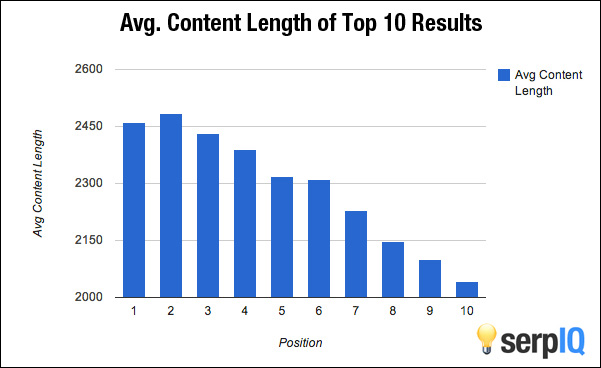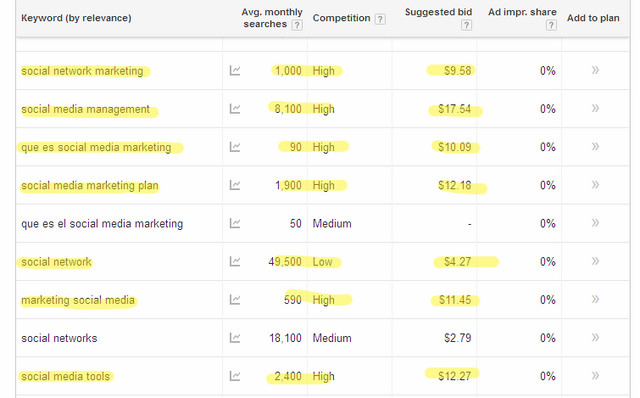 Developing high quality content is important for all business websites, as Google searches are still among the best ways to generate free traffic. According to a BrightEdge study, 51% of the traffic in B2C and B2B websites comes from search engines whereas 10% comes from paid search; 5% from social media; and 34% from other non-organic search channels. On the other hand, Net Market Share claims that Google enjoys 67.78 percent of search engine use compared to other search platforms. As such, it is important to focus search engine optimization efforts on Google. This is, of course, not to say that you should ignore other search engines, such as Bing and Yahoo!
Content marketers know just how complicated and unpredictable Google can be when it comes to its rules and algorithms for search page ranking. There have been many business owners whose websites’ ranks suddenly dropped because of a Google algorithm change or update. This can have a serious effect on a business’ profits.
I have also tried maintaining a couple of websites for Adsense purposes some ten years ago. I managed to earn a bit from them, but aside from being very busy at the time, it was just very stressful trying to keep up with the Google updates. Having to force myself to use keywords even in unnatural ways also took the fun out of writing.
What I learned about SEO and what my former clients and mentors used to say was that the best way to protect your site from the wrath of these Google updates is to always write high quality content. You can never go wrong with filling your site with relevant content because Google will never penalize that regardless of the updates they decide to implement.
But what exactly makes for high quality content? Are there certain standards to follow with regards to the word count, keywords, or keyword densities? Well, I recently started a blog on self-love, and I also launched a content services company, so decided to find out what “high quality content” really meant and how to write it, at least as far as Google was concerned. I wanted to ensure that my sites’ content was written properly from the onset and that they eventually gain high page ranks.
I researched on what the experts had to say, and I share with you my findings in this blog post.
Developing high quality content is important for all business websites, as Google searches are still among the best ways to generate free traffic. According to a BrightEdge study, 51% of the traffic in B2C and B2B websites comes from search engines whereas 10% comes from paid search; 5% from social media; and 34% from other non-organic search channels. On the other hand, Net Market Share claims that Google enjoys 67.78 percent of search engine use compared to other search platforms. As such, it is important to focus search engine optimization efforts on Google. This is, of course, not to say that you should ignore other search engines, such as Bing and Yahoo!
Content marketers know just how complicated and unpredictable Google can be when it comes to its rules and algorithms for search page ranking. There have been many business owners whose websites’ ranks suddenly dropped because of a Google algorithm change or update. This can have a serious effect on a business’ profits.
I have also tried maintaining a couple of websites for Adsense purposes some ten years ago. I managed to earn a bit from them, but aside from being very busy at the time, it was just very stressful trying to keep up with the Google updates. Having to force myself to use keywords even in unnatural ways also took the fun out of writing.
What I learned about SEO and what my former clients and mentors used to say was that the best way to protect your site from the wrath of these Google updates is to always write high quality content. You can never go wrong with filling your site with relevant content because Google will never penalize that regardless of the updates they decide to implement.
But what exactly makes for high quality content? Are there certain standards to follow with regards to the word count, keywords, or keyword densities? Well, I recently started a blog on self-love, and I also launched a content services company, so decided to find out what “high quality content” really meant and how to write it, at least as far as Google was concerned. I wanted to ensure that my sites’ content was written properly from the onset and that they eventually gain high page ranks.
I researched on what the experts had to say, and I share with you my findings in this blog post.
What is a Google Algorithm?
Before I go into the tips for writing high quality content, it is first important to understand why it matters. As such, it is essential to understand what the Google algorithm is and how it’s related to the quality of the content. According to BusinessDictionary.com, an algorithm is a step by step procedure designed to perform an operation, and which (like a map or flowchart) will lead to the sought result if followed correctly. In other words, it is the process used by Google to determine the websites that most closely match a user’s search query. As an analogy, when recruiting someone for a job post, the human resource personnel usually follow a certain process for evaluating the applicants in order to determine the one most suitable for the job. The applicant is evaluated against various criteria and undergoes various stages (interviews, tests, etc.) in the application process. The Google algorithm works in the same way. No one really knows the exact processes and criteria it uses for evaluating websites; hence, its unpredictability. However, some of the things it definitely checks are the quality of the content, the links, and other technical SEO aspects of the site. Indeed, there are many facets to search engine optimization, but for this blog post, I will focus on the quality of the content. I don’t claim to be an SEO expert, but content writing is something I know very well.High Quality Content –The Panda and Hummingbird Updates
Google has rolled out a number of updates on its algorithm over the years. They come frequently and regularly, as the company tries to improve the quality of the search results it provides users. Some of these algorithms are the Panda, Penguin, and Hummingbird. These are the most talked about updates, as they are the ones that currently specifically focus on ranking, although there was also a Brandy update in 2004 and the Pigeon update in 2014. In a nutshell, the Penguin update is more concerned about the quality of your site’s back links. The Brandy update is concerned more about the link anchor texts and latent semantic indexing while the Pigeon update is more about local searches. All of these updates focus on other aspects of search engine optimization where the rules—in my opinion—may still change over time. As I said in my previous blog post, I think that the only constant in effective online marketing initiatives is quality content. As such, I believe that focusing on high quality content would be the best way to “protect” your site from any updates Google may come up with in the future.The Panda Update
 First launched in February 23, 2011, the Panda update was intended to demote low quality sites and to rank high quality sites higher. It especially targeted content farms–sites that aggregate information from various sources, with information usually being stolen from other sites. They had the purpose of creating a huge number of pages so that they could rank on Google for various keywords. Examples are sites like eHow and WiseGeek, as well as article directories like eZine Articles and Buzzle.
I, too, used to upload articles on these sites, and although I personally made sure that all of the content I wrote was unique and relevant, the fact that nobody reviewed the article submissions meant that it was easy for users to upload low quality content.
The Panda update does not evaluate the quality of content on a page level but on a site level. It runs periodically (every one to two months) and takes a new shape every time it does, which may affect your ranking. However, Neil Patel points out that high quality content will likely bounce back in the search results while content pages that escaped the previous update get caught in the Panda net.
First launched in February 23, 2011, the Panda update was intended to demote low quality sites and to rank high quality sites higher. It especially targeted content farms–sites that aggregate information from various sources, with information usually being stolen from other sites. They had the purpose of creating a huge number of pages so that they could rank on Google for various keywords. Examples are sites like eHow and WiseGeek, as well as article directories like eZine Articles and Buzzle.
I, too, used to upload articles on these sites, and although I personally made sure that all of the content I wrote was unique and relevant, the fact that nobody reviewed the article submissions meant that it was easy for users to upload low quality content.
The Panda update does not evaluate the quality of content on a page level but on a site level. It runs periodically (every one to two months) and takes a new shape every time it does, which may affect your ranking. However, Neil Patel points out that high quality content will likely bounce back in the search results while content pages that escaped the previous update get caught in the Panda net.
The Hummingbird Update
 This update was implemented sometime in August, 2013, although it was announced only in September 26 of the same year. Its goal is to better understand a user’s query, especially when the user enters a conversational search. Examples would be if the user types, “Where is the best vacation place in the summer?” or “How much does a catering service cost?” The Hummingbird update aims to understand what users mean with queries like these and find suitable sites that answer them.
This update was implemented sometime in August, 2013, although it was announced only in September 26 of the same year. Its goal is to better understand a user’s query, especially when the user enters a conversational search. Examples would be if the user types, “Where is the best vacation place in the summer?” or “How much does a catering service cost?” The Hummingbird update aims to understand what users mean with queries like these and find suitable sites that answer them.
Tips for Writing High Quality Content
Based on the Panda and Hummingbird updates, here are some of the tips that experts provide in writing high quality content:Tip #1. Write in-depth content.
Refrain from creating thin content or that which adds no or little value to the reader. Although there are no hard and fast rules regarding the right number of words for an article, a page that has very few words or sentences won’t be seen favorably by Google. In particular, if your site has a large number of pages, which contain only a few sentences and they are all indexed by Google, then the Panda update may consider it low quality. Having a few thin pages won’t cause you any problem. Just make sure that majority of your site provides helpful content. As Neil Patel contends,Content that is well researched, in-depth and that gets shared on Facebook, Twitter, Pinterest, Google+ and the other major social platforms continues to rank well – perhaps even more highly than before.
What is the best word count for your content?
According to Neil Patel,Length is strength. Longer content tends to dominate search engine results pages these days in SEO power.Based on an analysis conducted by SERPIQ regarding the average content length of domains on the first page of the SERPs (Search Engine Results Pages), it is shown that more is better.
 Their analysis shows that the top 10 domains on SERPs have between 2,100 and 2,500 words. In this regard, they recommend that a content piece should have at least 1,500 words, although, of course, you’ll still need to consider the niche you are in. For example, if your post intends to announce an event, then the users will not need a very lengthy post, as they will most likely need only information on the event’s date and venue.
I understand that writing 1,000 words can be quite daunting, but I find that if you’re passionate about your niche and if you do your research, then you’ll see that you can easily write 1,500 words or more. This also shows that you’re an expert in your niche, which will make Google rank your site higher. Of course, if you don’t have the writing skills or are too busy to write that much, then you can hire the services of high quality content writers. Consider it an investment in your online business’ present and future success.
Their analysis shows that the top 10 domains on SERPs have between 2,100 and 2,500 words. In this regard, they recommend that a content piece should have at least 1,500 words, although, of course, you’ll still need to consider the niche you are in. For example, if your post intends to announce an event, then the users will not need a very lengthy post, as they will most likely need only information on the event’s date and venue.
I understand that writing 1,000 words can be quite daunting, but I find that if you’re passionate about your niche and if you do your research, then you’ll see that you can easily write 1,500 words or more. This also shows that you’re an expert in your niche, which will make Google rank your site higher. Of course, if you don’t have the writing skills or are too busy to write that much, then you can hire the services of high quality content writers. Consider it an investment in your online business’ present and future success.
Tip #2. Write content that answers users’ queries.
Rather than just focusing on ranking for specific keywords, you should write content that answers users’ questions. This will allow Hummingbird to favorably rank your site. In this regard, you don’t always have to write a 1,500-word article if it’s not necessary. What’s important is for the content to be long enough for you to be able to adequately answer the user’s query. Alternatively, the content must also be interesting, add value to the reader, and solve a specific problem.Tip #3. Write unique and original content.
When the Panda algorithm determines that majority of your site’s content has been copied from other web sources, then Google won’t rank it favorably. Although Andy Crestodina of Kissmetrics.com claims that duplicate content won’t hurt your domain’s credibility, it also won’t improve your content’s rank. Moreover, these may again change in the future. A time may come when the search engine may become stricter about instances of plagiarism and about protecting intellectual property rights, so I think that it’s best to err on the safe side by ensuring that you always write original content and that you include citations where needed. To check for duplicate content, you can use tools like Copyscape, the Similar Page Checker, and Siteliner. If you have duplicate content on your own site where you have a large number of products and each product variation has a separate page (e.g. a separate page for each size and color), then the solution would be to use canonical tags.Tip #4. Write engaging and thought-provoking content.
Although Google won’t necessarily evaluate how engaging your content is, it would appeal to more readers, which would get your page more shares and inbound links–things the search engine does evaluate. Use a conversational and friendly tone, as this enables you to connect and relate to your audience more. Also try to start with an interesting and promising introduction that would hook your readers into reading the entire article. In addition, use stories to drive a point, especially since people love stories.Tip #5. Ensure your site’s usability and readability.
Ensure that your readers will have an easy time reading your content and that they are not distracted by things, such as a long and confusing navigation; lack of white space; stacked “recommended articles” on the page; too many video ads; and ads that expand over or into the content.Tip #6. Make sure that your H1s and Meta Tags correctly reflect your content.
Although Panda is not concerned with Meta Tags and H1s, they’re still important as they can affect your site’s ranking.Tip #7. Focus on quality over frequency.
Although many SEO experts advise writing blog posts everyday, this is not as important as writing quality content. As an example, if you write a blog post everyday where you simply rewrite or summarize the articles written by others, then you may have 30 articles every month, but they would be of low quality. Users would also rather read the original articles. Similarly, even if you write blog posts everyday, if they contain only 2 to 3 paragraphs per article, then Google would still consider the site low quality. In this regard, the search engine would accord more value on websites where new content is posted once a week and where each piece of content is original and provides an in-depth discussion of the topic.Tip #8. Keep your site’s content fresh.
Although the frequency of publishing content to your website is not as important as the quality, you still have to regularly publish fresh content on your site. According to Neil Patel, Google gives your webpage a score whenever you publish fresh content. Note, though, that this freshness score will diminish over time, which means that your site constantly needs to be updated.
In this regard, if you always update your site with well-researched, relevant, and in-depth content with 1,500 or more words, then you are bound to see an increase in the number of organic visitors you get from Google, as well as in your site’s rankings. Conversely, sites that publish content sporadically or irregularly will have a harder time improving their ranking with the search engine.
According to Neil Patel, Google gives your webpage a score whenever you publish fresh content. Note, though, that this freshness score will diminish over time, which means that your site constantly needs to be updated.
In this regard, if you always update your site with well-researched, relevant, and in-depth content with 1,500 or more words, then you are bound to see an increase in the number of organic visitors you get from Google, as well as in your site’s rankings. Conversely, sites that publish content sporadically or irregularly will have a harder time improving their ranking with the search engine.
How often should you publish new content?
Most popular sites publish new content at least once a week. I recently attended a webinar by Michael Hyatt, and he suggested starting with posting once a week until such time that you can commit to it. He said that you can then post more frequently if you want to. He pointed out that consistency is more important than frequency.Tip #9. Write about evergreen topics.
One way to keep your old content’s ranking high and keep it trending is to write about evergreen topics. These are ideas that hardly change over time, making them relevant at all times. For example, the topic on how to come up with blogging ideas is evergreen, as people would always be interested in this topic. On the other hand, the popularity of a topic like the changes implemented by the Boston Google update in 2003 will be short-lived, as users will no longer be interested in it once newer Google updates come out.Tip #10. Avoid Keyword stuffing.
There’s no hard and fast rule on how many times you should use your focus keyword in your content. However, try to refrain from overusing it as it may lead to a Panda penalty. The general recommendations I’ve received are to use the keyword in your H1 and H2 tags; in the Meta title tag; in the permalink; and at the start and end of the article. My rule of thumb is to use it whenever an opportunity to use it naturally arises. According to Yoast SEO , Google prefers content that can be easily read. Not only are high-keyword density articles quite frustrating to write, they also make your article more difficult to read. Instead of repeatedly using your keyword, you can also use synonyms, which Google now recognizes. Nevertheless, if you’re particular about keyword densities, then Yoast SEO recommends a keyword density between 0.5 and 2.5 percent.Tip #11. Make sure your site contains static elements.
These static elements include the Terms of Service, the About page, the Contact page, and the Privacy Policy. These pages tell your audience who is behind the site; what it is about; and what the applicable terms of service are. These pages may be thin, but they’re part of the “criteria” that Panda uses to evaluate the quality of your site. Try to write 700-1,000 words on these pages and make sure that they are unique. However, if you can’t write in-depth content for them, then you should add a no-follow or no-index tag within your HTML file’s <head> tag.Tip #12. Write and structure your content with user experience in mind.
Google clearly favors sites that focus on providing users with value. This includes providing your users with a pleasant experience while they use your site and consume its content. For example, no matter how useful and well-researched your content is, if users can’t access it or can’t easily find the information they need, then your content doesn’t serve its purpose well. Especially with the Panda update evaluating websites on a site-level, it is important for you to also improve your website’s user experience. You should consider factors like platform, functionality, information architecture, content strategy, usability and accessibility, as well as user interface. As examples, make sure that all your navigation links can be clicked and that your site’s Search feature works properly.
Since user experience is an entire topic on its own, I will discuss it more in-depth in a future blog post.
Especially with the Panda update evaluating websites on a site-level, it is important for you to also improve your website’s user experience. You should consider factors like platform, functionality, information architecture, content strategy, usability and accessibility, as well as user interface. As examples, make sure that all your navigation links can be clicked and that your site’s Search feature works properly.
Since user experience is an entire topic on its own, I will discuss it more in-depth in a future blog post.
Tip #13. Use long tail keywords.
With the Hummingbird update focusing on how to provide the best matches to users’ conversational searches, long tail keywords should be used, as they give Google a better idea on what your site is specifically about. It also increases the chances that the long-tail keyword matches the keywords that the user is searching for. You should try to align your content and your keywords so that it best matches the way people search for information and the way they talk.
You should try to align your content and your keywords so that it best matches the way people search for information and the way they talk.
Tip #14. Supplement your content with video embed, infographics, images, or other media.
Although high-quality content does not exactly rely on images and other types of media, using them allows your site to attract more social media shares and inbound links. As indicated by Stephanie Buck of Mashable, Facebook users like photos twice more than they do text updates. They also share videos 12 times more than text and images combined. In addition, the use of multimedia increases user engagement and the time they spend on your page. According to the Web Marketing Group, 40 percent of people are likely to respond better to visually presented information than to plain text. Although Google does not consider the use of multimedia on your site, it does increase your inbound links, which Google evaluates. Also, who knows? Perhaps Goggle will start giving more importance to the use of multimedia in the future.Tip #15. Make sure that you use correct spelling and grammar and that your content is coherent.
Google puts a strong emphasis on the trustworthiness of sites and their pages. As such, typos, poor grammar, and incorrect spelling will make Google see your site as less trustworthy. It will also make your readers dubious of your site’s credibility. Additionally, it is important to ensure that your content is factually correct. Be sure to fact check everything and to cite your sources as needed. This shows your readers that you’re getting your information from reliable and credible sources. It also shows them that you’re respectful of other people’s work. Finally, be sure to organize your content in a logical manner. These are only some of the reasons that it will do you good to hire high quality content writers. They can take care of building your site’s content while you attend to the other aspects of your business.Tip #16. Use proper text and page formatting.
This is actually one aspect of the user experience. Make sure that you present your content in an aesthetically attractive manner. Ensure that it can be easily scanned and skimmed and that it is easy to read. The following are some of the ways by which you can easily achieve these:- Divide your content into sections and subsections.
- Use numbered and bulleted lists.
- Use colors that are pleasant to the eyes.
- Use fonts and font sizes that can be easily read.
- Make appropriate use of italics and bolds.
- Write short and concise paragraphs and sentences.
- Use white space.
Tip #17. Evaluate your content based on the following questions provided by Google employee Amit Singhal
After you’ve written your content, it would help for you to assess it based on these questions, which Singhal says will give you insights on how Google “thinks.”
- Would you trust the information presented in this article?
- Is this article written by an expert or enthusiast who knows the topic well, or is it more shallow in nature?
- Does the site have duplicate, overlapping, or redundant articles on the same or similar topics with slightly different keyword variations? Would you be comfortable giving your credit card information to this site?
- Does this article have spelling, stylistic, or factual errors?
- Are the topics driven by genuine interests of readers of the site, or does the site generate content by attempting to guess what might rank well in search engines?
- Does the article provide original content or information, original reporting, original research, or original analysis?
- Does the page provide substantial value when compared to other pages in search results?
- How much quality control is done on content?
- Does the article describe both sides of a story?
- Is the site a recognized authority on its topic?
- Is the content mass-produced by or outsourced to a large number of creators, or spread across a large network of sites, so that individual pages or sites don’t get as much attention or care?
- Was the article edited well, or does it appear sloppy or hastily produced?
- For a health related query, would you trust information from this site?
- Would you recognize this site as an authoritative source when mentioned by name?
- Does this article provide a complete or comprehensive description of the topic?
- Does this article contain insightful analysis or interesting information that is beyond obvious?
- Is this the sort of page you’d want to bookmark, share with a friend, or recommend?
- Does this article have an excessive amount of ads that distract from or interfere with the main content?
- Would you expect to see this article in a printed magazine, encyclopedia or book?
- Are the articles short, unsubstantial, or otherwise lacking in helpful specifics?
- Are the pages produced with great care and attention to detail vs. less attention to detail?
- Would users complain when they see pages from this site?
Conclusion
In summary, the best way to protect your site from the unpredictable effects of Google updates is to ensure that you write high quality content that provides value to your users. This means that your content provides expert or unique insight; makes people laugh; provides entertainment, provides inspiration, answers a question, and solves a problem among others. Rather than writing for Google and focusing on the technical aspects of SEO, the surest way you can write high quality content is by writing for your users, based on their profile and their needs. When Google sees that you prioritize your users instead of engaging in tricks that will make your site rank high, then you will surely gain Google’s trust in the long-term.Need high quality content writers for your website? Learn more about the various content services offered by Sharp Minds Content. We can customize them according to your requirements. We also offer a free 300-word article! Try our services risk-free now!

